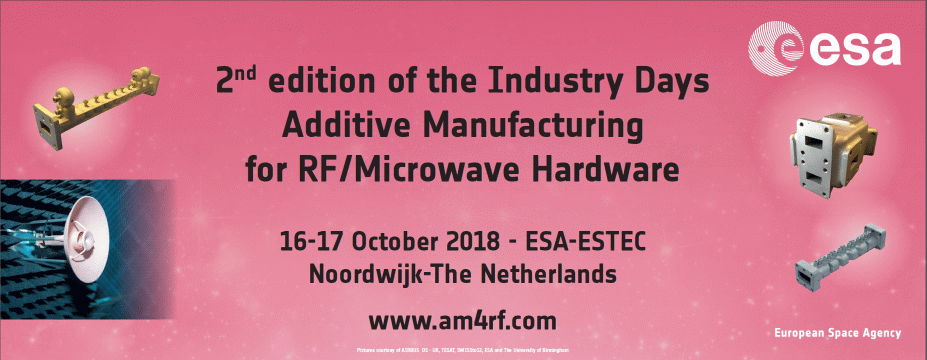Dr
Cristiano Tomassoni
(University of Perugia)
Additive Manufacturing (AM) is witness of an increasing popularity because of its low-cost, fast prototyping capability and flexibility. The use of such a technology for the manufacturing of RF and Microwave components is not straightforward. Some critical points are related to the high conductivity surfaces and/or small manufacturing tolerances required in some RF/microwave applications. Much effort has been made to adapt 3D printing technologies to the manufacturing of RF and Microwave components, but there is still a lot of work to do.
AM technology flexibility does not mean that all geometries are now possible. In fact, AM technology has its own constrains that should be considered at the design stage. In any case, the constrains are different from those of the classic manufacturing technologies. This means that geometries that was not allowed in the past are now possible.
In this contribution, some microwave filters exploiting such new geometries are shown. Such new shapes have been used to obtain resonators capable of response with transmission zeros very close to the filter band, filters with in-line geometries capable of transmission zeros and very compact filters manufactured on a very thin septum. All the presented structures are realized by using a 3D printer based on stereolithographic technology, this resulting in plastic printed objects. Such objects need to be metalized and this is done by silver painting and then by copperplating. This technique is now intended for prototyping. The aim of this presentation is to share with the audience such ideas and see if it is possible to improve the quality of the proposed structures by increasing their Technology Readiness Level (TRL) for example by exploiting other AM technologies.
Why your contribution is relevant for the event?
The main relevance of my contribution is to show that 3D printing is an opportunity not only for the manufacturing of classical structures, but also for thinking to new classes of microwave components. Indeed, each manufacturing technology has constrains that should be considered at the design stage. However, constrains differs from a manufacturing technology to another. This means that a new manufacturing technology give new possibilities in component geometries that can be exploited to obtain devices that was not attainable before.
I will show some new classes of filters that have interesting features and that can be manufactured thanks to the AM technology. I hope that this will encourage a discussion that will help the exchange of ideas between technology specialists and RF/microwave component designers.
There are no materials yet.

